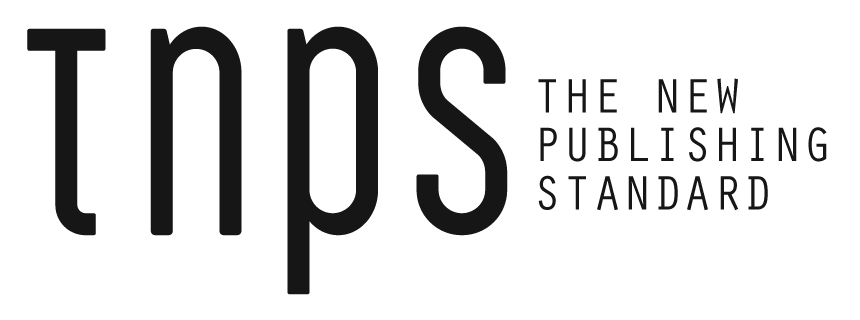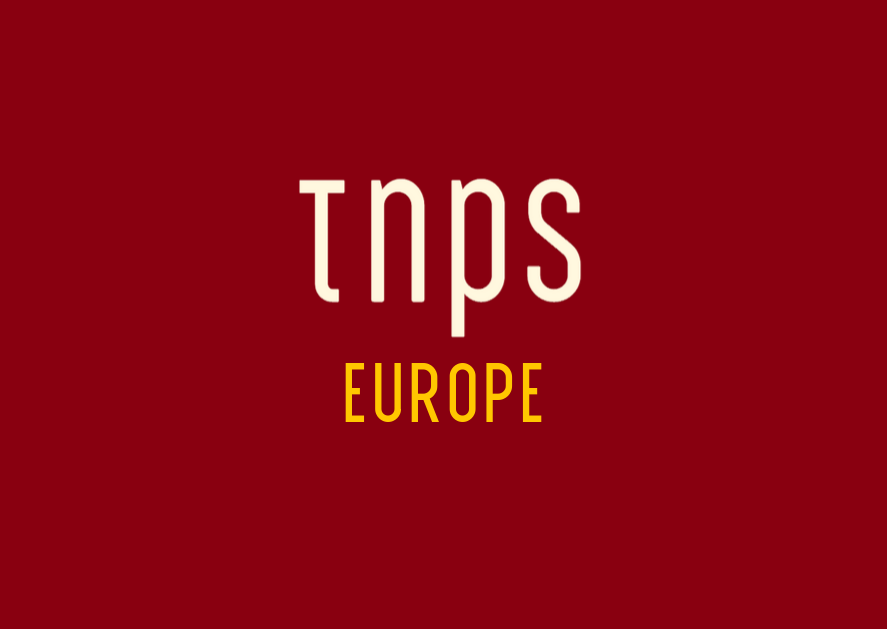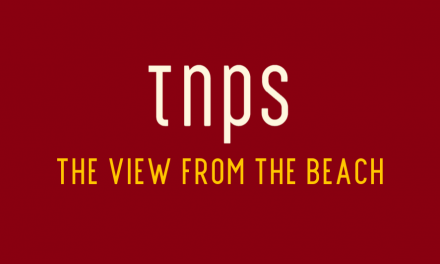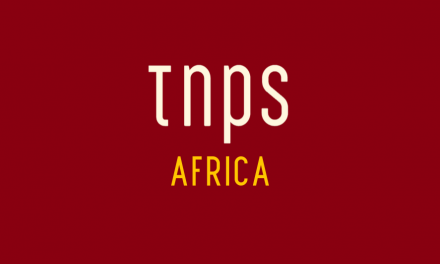Rather than mourning the end of copyright protection, publishers should focus on what they do best: understanding audiences, nurturing creative talent, and delivering quality content.
Back in March, suggestions that President Donald Trump might reward loyal AI company CEOs with an Executive Order exempting AI from copyright laws was a barely noticed sideshow amid the furor over Meta’s use of pirated books for training.
Per TNPS at the time: “By obsessing over as yet unproven legal infractions instead of trying to engage with AI companies to strike deals, we risk the very real possibility of an executive order granting broad exemptions to AI companies from copyright claims, such that would pose an existential threat to the publishing industries as they currently operate.“

From Speculation to Reality: The March Warnings Materialise
The speculative scenario outlined in March has moved disturbingly close to reality. President Trump, speaking at an AI summit this past week, declared that “You can’t be expected to have a successful AI program when every single article, book or anything else that you’ve read or studied, you’re supposed to pay for… You just can’t do it, because it’s not doable.” His rationale echoes the competitive framing against China that many feared would drive policy: “China’s not doing it… You have to play by the same set of rules.”
The President’s pronouncement represents a fundamental shift from the cautious wait-and-see approach that has characterised the copyright debate around AI training. Rather than allowing the courts to determine the boundaries of fair use, Trump has effectively signalled his administration’s willingness to side decisively with AI companies – precisely the outcome the March analysis warned against.
The Executive Pathway: Clearer Than Ever
Trump’s comments make the executive order pathway more plausible than ever. He called for “a common sense approach that will allow unfettered development of AI” and suggested that current copyright frameworks are fundamentally incompatible with AI development at scale. This isn’t merely deregulatory rhetoric; it’s the ideological groundwork for sweeping executive action.
The administration’s approach appears to be coalescing around the argument that copyright compensation for AI training would be administratively impossible and competitively suicidal. This provides the perfect pretext for an executive order that could exempt AI companies from copyright liability altogether – framed not as corporate welfare, but as national security imperative.
The Publishing Industry in the Crosshairs
For book publishers specifically, Trump’s stance represents an existential threat that goes well beyond the theoretical concerns raised in March. The President’s analogy – comparing AI training to human reading – reveals a fundamental misunderstanding (or wilful misrepresentation) of the scale and commercial nature of AI training operations.
The Scale Differential
When Trump argues that “When a person reads a book or an article, you’ve gained great knowledge. That does not mean that you’re violating copyright laws,” he ignores the crucial distinction between individual human learning and industrial-scale data harvesting. A single AI model might ingest millions of books simultaneously – the equivalent of thousands of human lifetimes of reading – to potentially create commercial products that directly compete with the original works.
The Backlist Vulnerability
Book publishers face particular exposure because their value proposition heavily depends on backlist sales – older titles that continue generating revenue years or decades after publication. An executive order exempting AI training would essentially nationalise these backlists for the benefit of tech companies, without compensation. Publishers could potentially find themselves competing against AI-generated content that has been trained on their own intellectual property, whilst receiving nothing in return.
The Style Replication Threat
Unlike news content, which primarily competes on timeliness and factual accuracy, books often derive their value from distinctive voice, style, and creative approach. AI systems trained on comprehensive book catalogues could potentially replicate these distinctive elements, creating substitute products that undermine the market for original works. Publishers might witness AI systems producing “novels in the style of” their bestselling authors, using training data derived from those very authors’ works.
Industry Response: Too Little, Too Late?
The publishing industry’s response to these developments has been characteristically fragmented and reactive. The Human Artistry Campaign has pushed back, arguing that “AI companies need high-quality copyrighted works in order to function” and that this “can only be achieved through partnerships between creative industries and technology companies.” But this response, whilst principled, may prove inadequate against the juggernaut of an executive order backed by national competitiveness arguments.
The industry’s reticence to explore licensing schemes and payment systems may even have fuelled the imminent fire. Trump’s blunt rejection of any compensation framework, with his dismissal that “you can’t do it” regarding payment systems, might have rung hollow if trade publishers had stepped up while the going was good. By making Trump’s point for him, negotiated solutions may be off the table entirely in the future.
The China Card: A Powerful Trump Weapon
Trump’s invocation of China represents perhaps the most potent argument in his arsenal. By framing copyright protections as a competitive disadvantage, he transforms what should be a domestic policy debate about intellectual property rights into a national security imperative. This rhetorical shift makes opposition to AI exemptions appear unpatriotic – a masterful political manoeuvre that could neutralise traditional Republican allies of copyright holders.
The China comparison also provides cover for what might otherwise appear as straightforward corporate welfare for Silicon Valley. By positioning AI companies as national champions in a global technology race, Trump can justify policies that would transfer billions of dollars in intellectual property value from creators to tech companies without compensation.
Legal Challenges: The Last Line of Defence
The courts remain the primary bulwark against executive overreach on copyright, but even here the landscape appears increasingly favourable to AI companies. Recent federal court decisions have sided with Meta and Anthropic, throwing out artists’ infringement claims by ruling that AI training constitutes fair use. These precedents could provide legal cover for an executive order, making judicial challenges more difficult.
However, bipartisan legislation introduced by Senators Josh Hawley and Richard Blumenthal seeks to prohibit AI training on copyrighted works without permission, suggesting that Congress might provide a check on executive action. But with Trump’s apparent determination to present this as a competitive necessity against China, even bipartisan opposition may prove insufficient. And at the end of the day, a Trump-compliant Supreme Court stands ready to bat away all reasonable opposition.
Advocacy in the Face of AI Apocalypse – The Innovation Paradox
Trump’s public mutterings are a gift to the Luddite Fringe, breathing life into the Fringe’s primordial fear of all things new, but AI is not the problem here. The problem is that the president only understands and cares about one word in the term “intellectual property”, and it’s not the first one.
But let’s not abandon all hope. Trump’s approach contains a fundamental contradiction that publishers should exploit in their advocacy efforts. By eliminating compensation mechanisms for creative works, an executive order would undermine the very incentive structures that create the high-quality content AI systems need for training.
This creates a paradox: AI companies need extensive, high-quality training data to remain competitive, but policies that eliminate compensation for such data will inevitably reduce its future supply. Publishers should emphasise that sustainable AI development requires sustainable creative industries – a message that might resonate even with policymakers focused primarily on technological competitiveness.
Strategic Imperatives: Preparation and Adaptation
The publishing industry needs now to move beyond reactive positioning to proactive strategy. The March warning about “obsessing over as yet unproven legal infractions instead of trying to engage with AI companies to strike deals” appears prophetic. However, rather than simply racing to conclude deals before executive action eliminates negotiating positions, publishers need a more nuanced approach that prepares for multiple scenarios.
Immediate Actions: Buying Time and Building Position
Publishers with pending AI licensing negotiations should absolutely prioritise concluding agreements, but not in panic mode. The recent Amazon-New York Times AI deal, likely negotiated before Trump’s latest statements, demonstrates that some AI companies remain willing to pay for premium content – at least for now. These early deals establish precedents and market rates that could prove valuable even in a post-executive order landscape.
Legal challenges to any executive order will almost certainly emerge, potentially buying months or years of breathing room. During this interim period, compensation discussions will likely freeze as AI companies await legal clarity. Publishers should use this time strategically, not to whine over lost opportunities, but to reposition themselves for the new reality.
Coalition Building Beyond Crisis
The industry must broaden its coalition beyond traditional creative stakeholders, but not merely as a defensive measure. Tech workers, software developers, and knowledge workers whose expertise could be appropriated without compensation represent natural allies. However, the most powerful coalition partners may be the AI companies themselves – particularly smaller players who could benefit from differentiated, premium content partnerships even in a post-copyright world.
The Post-EO Reality: Navigating the New Landscape
Assuming Trump proceeds with an executive order and the Supreme Court ultimately upholds it, the publishing industry faces a fundamentally altered landscape. However, this need not represent an apocalyptic scenario if publishers adapt strategically to the new realities.
The Continuous Content Imperative
AI’s insatiable hunger for fresh content is key. Despite having access to vast historical archives, AI companies demonstrate an insatiable appetite for new material. This stems from several factors that provide leverage points for publishers:
Temporal Relevance: AI systems trained on historical data struggle with contemporary references, cultural shifts, and emerging topics. A model trained primarily on pre-2020 content, for instance, would lack understanding of recent political developments, technological advances, or cultural phenomena. Publishers producing current, relevant content maintain intrinsic value.
Quality Differentiation: Not all content provides equal training value. High-quality, professionally edited material offers superior training data compared to unstructured web content. Publishers can leverage their editorial standards and author relationships to provide premium training material that AI companies genuinely need.
Exclusive Access Windows: Even in a post-copyright world, publishers control the timing of content release. Strategic partnerships could provide AI companies with early access to new releases, creating ongoing value exchanges despite the absence of traditional licensing fees.
Survival Strategies: From Resistance to Adaptation
Content Strategy Reimagined
Publishers must reconceptualise their relationship with content creation and distribution. Rather than viewing AI as a threat to be defeated, successful publishers will treat it as a new distribution channel requiring strategic management.
Author Partnership Evolution: Publishers could develop new author agreements that explicitly address AI training rights whilst providing alternative compensation mechanisms. Authors might receive revenue shares from AI partnerships, merchandising opportunities, or expanded platform access instead of traditional royalties.
Curated Collections: Publishers could package content specifically for AI training, creating curated datasets that offer superior value to raw content scraping. This positions publishers as essential partners rather than reluctant suppliers.
Real-Time Content Streams: Publishers with strong editorial operations could provide ongoing content streams to AI companies, maintaining relevance through continuous engagement rather than one-off licensing deals.
New Revenue Models
Consultation and Expertise: Publishers possess deep understanding of audience preferences, content quality, and market dynamics. AI companies developing consumer-facing products need this expertise, creating consultancy opportunities.
Brand Partnerships: Publishers could license their brand credibility to AI-generated content, providing quality assurance that commands premium pricing in the market.
Hybrid Publishing Models: Publishers might develop new formats that combine AI-generated draft content with human editorial oversight, creating products that leverage both technologies whilst maintaining editorial value.
The Competitive Advantage of Human Curation
Even in a world where AI companies can access content freely, publishers retain competitive advantages that pure technology companies lack:
Editorial Judgement: Publishers understand what resonates with audiences, how to structure narratives, and what constitutes quality content. These skills become more valuable, not less, in an AI-saturated market.
Author Relationships: Publishers maintain relationships with creators who generate the fresh content AI systems require. These relationships represent ongoing value that cannot be simply appropriated through executive order.
Market Understanding: Publishers (some, anyay) wknow their audiences intimately – understanding preferences, purchasing behaviour, and cultural trends that AI companies need to develop successful consumer products.
The Innovation Opportunity
Rather than simply defending existing business models, publishers could pioneer new approaches that leverage AI capabilities whilst maintaining human creative value:
AI-Assisted Publishing: Publishers could use AI tools to enhance editing, improve distribution, and personalise reader experiences whilst maintaining editorial oversight and author relationships.
Collaborative Creation: Publishers might develop new formats where human authors work alongside AI systems, creating hybrid content that leverages both human creativity and AI capabilities.
Personalised Publishing: Publishers could use their content archives and editorial expertise to create personalised reading experiences, delivering customised content that individual AI systems cannot match.
Adaptation, Not Apocalypse
The scenario outlined in March – an executive order exempting AI companies from copyright liability – no longer appears speculative. Trump’s recent statements provide both the ideological framework and the political justification for such action. For book publishers, this represents a fundamental challenge requiring strategic adaptation rather than existential panic.
The industry’s response must be swift and strategic, but it need not be desperate. Publishers possess inherent advantages that executive orders cannot eliminate: editorial expertise, author relationships, market understanding, and the ability to create fresh, relevant content that AI systems continuously require.
The transition will undoubtedly be difficult. Traditional revenue models will face pressure, established practices will require revision, and the industry will need to develop new competencies. However, this transformation also presents opportunities for publishers willing to embrace change rather than simply resist it.
Publishers who adapt strategically – developing new partnership models, leveraging their editorial expertise, and positioning themselves as essential partners in the AI ecosystem – may find themselves stronger than before. Those who retreat into defensive positions, relying solely on legal challenges and industry lobbying, risk being left behind entirely.
If the TNPS warning issued in March proves prophetic, still its ultimate message remains constructive: by focusing on practical partnerships rather than theoretical legal positions, the creative industries can shape their own future rather than having it imposed upon them. The window for panic has passed; the era of strategic adaptation has begun.
Rather than mourning the end of copyright protection, publishers should focus on what they do best: understanding audiences, nurturing creative talent, and delivering quality content. These capabilities remain invaluable in any technological landscape, including one where AI companies can access content freely.
The question is not whether publishers will survive the post-copyright world, but how quickly they can position themselves to thrive in it.
This post first appeared in the TNPS LinkedIn newsletter.





